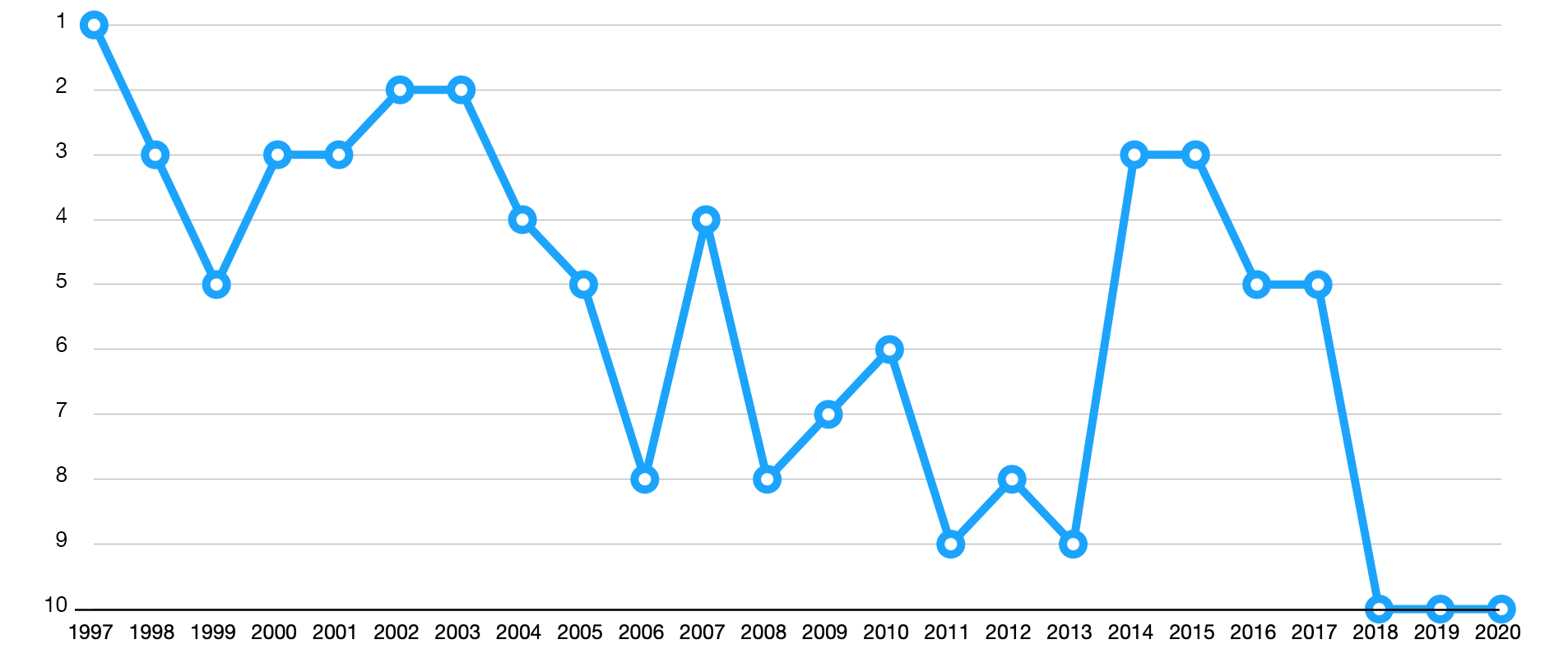After 43 years in Formula 1 — and 23 years since its last World Championships — the Williams F1 team was sold to a new owner, who ousted both Frank and Claire Williams from the team’s management.
Sure, there are a lot of factors to blame for the downfall of Williams; the two biggest being a) increased budget from manufacturers, which made it difficult for private teams to compete, and b) increasingly complex regulations and technology, such as hybrid engines and modern wind tunnels. Although this feeds back into the budget factor.
But most of all, the poor management of Williams is to blame, and the fact Williams didn’t know their areas of underperformance. Something which I think is quite common in sports, also in football: Fire the manager (or, in Williams’ case; technical director), leave the rest untouched, and hope for the best.
For the last decade, every time the Williams team had a bad or good result, they didn’t know why the car was slow or fast. Other teams could pin their woes and wins down to specific areas: The tires became overheated; we lack downforce; the car oversteers; we got lucky. But Williams never had a clear answer.
Since taking the reins of the team in 2013, every interview with Claire Williams has been filled with fluff language like “We will be back” and “We love racing” and “We are doing the work to be back”, but every time nothing meaningful was said at a strategic level. Instead, Paddy Lowe — who was immensely successful at the Mercedes team — was fired because someone needs to take the sword, just Pat Symonds before — who won titles with Benetton and Renault.
Let’s look back:
- 1997, the year the last of Williams’ 16 Formula 1 World titles were won.
- For 1998, chief designer Adrian Newey left to a rival team, and engine manufacturer Renault left the sport entirely. Williams was left with 1-year-old Renault engines rebadged as Mechachrome, while rival teams had newer engines. Instead of its 8 wins in the year before, in 1998 the team got zero wins.
- For 2000, Williams partnered with BMW, which was a great move. There was manufacturing support, increasingly important in F1 with increased budgets. The team is back to winning races in 2001 and finishes 2nd in the championship both in 2002 and 2003. But because of BMW’s heavy investment, and because the BMW engine was often seen as the best engine in the field (Williams often achieved the highest top-speeds of the field), BMW was increasingly getting frustrated by the lack of overall car performance (and championships). In 2003 the relationship starts to break down, as BMW sends their own staff to oversee how the team is managed.
- In 2004, Williams came up with a unique design at the front, dubbed the ‘Walrus nose’. In hindsight it doesn’t look like a weird concept, because many teams in 2010 used similar concepts. But Williams couldn’t get it to work and switched back to conventional nose design mid-2004 season. There are a few standout results, which suggest the car isn’t that bad.
- BMW leaves after the 2005 season.
- 2008, and Williams can’t get the car to work properly. A few standout results suggest the car isn’t that bad.
- 2009 and Williams is one of the few teams who run a double-diffusor. The BrawnGP team — who went on to win the championship — did have one too. But Williams can’t get the car to work properly.
- In 2010 the team takes 69 points, in 2012 the team takes 76 points. But in 2011 Williams only takes 5 points in the whole season. They can’t get the car to work properly and they don’t know why.
- 2012 and again they can’t get the car to work properly as they finish 8th in the championship. Yet driver Pastor Maldonado takes a surprise pole position in Spain and wins the race. Asked why suddenly the car is so fast, the team answers they don’t know. Later, technical director Mark Gillan is fired.
- In 2013, the team tries to copy the blown-exhaust from Red Bull-Racing, but can’t get it to work. The undrivable car means the team is back to 5 points scored all season.
- The 2014 car is actually very good, thanks to the Mercedes engine. The team finishes 3rd in the championship (up from 9th in 2013).
- For the next seasons, Williams relies on the powerful Mercedes engine for their low-downforce concept. But as other engine manufacturers catch-up, the low-downforce concept becomes less viable. In 2016 they try to add downforce, but it leads to flow-detachment/turbulence, but the team doesn’t really know why. After the season, technical director Pat Symmonds is forced to leave the team.
- In 2017, driver Lance Stroll takes a surprise front-row start. When asked why their car is suddenly so fast, the team answers they don’t really know.
- 2019 and the team isn’t ready for winter testing. Technical director Paddy Lowe is fired.
- 2018 and for some reason, the team only scores 7 points all season. Only 1 point is scored in the whole of 2019. And come 2020, 0 points after 7 races. The team is sold.
Williams constructors championship standings since 1997:
